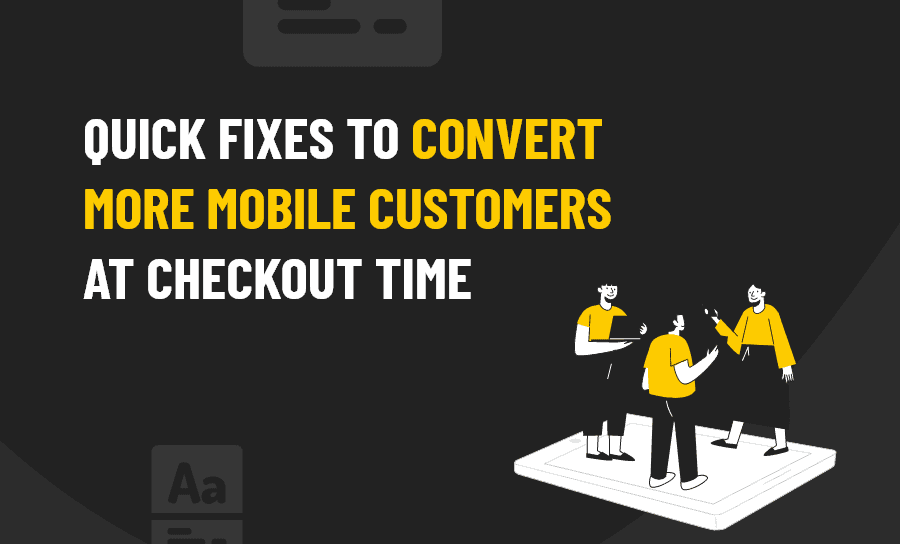For retailers, especially those who target the lucrative Millennial and Gen X markets, mobile shoppers are making up more and more of their customer demographic.
In the UK, a WorldPay report projects that mobile e-commerce spending will overtake desktop e-commerce spending as soon as 2023.
According to figures from Statcounter, mobile traffic now accounts for 41.66% of all UK web traffic, with tablet traffic accounting for a further 10.36%. Over in the US, the story is similar, with mobile use actually being even more prevalent. Up to 70% of all U.S. online traffic now comes from smartphones and tablets.
For more than a while now online retailers and physical retailers with an e-commerce presence – nudged especially by Google – have been schooled on the importance of a mobile-friendly website, and many, quite sensibly have acted on the general advice, ideally using a responsive design that is supposed to accommodate all users, no matter what device they are browsing from.
While many of these sites pass Google’s ‘mobile test’ that avoids a SERPs penalty when it comes to the all-important checkout process more than a few are still not providing the easy, seamless process mobile users want.
With this in mind, here are some important -but quick and easy – mobile checkout optimization tips that should be implemented into any online retail checkout in order to ensure it is as customer-friendly as it is SEO optimized:
Simplicity
If a consumer is making a purchase via their smartphone, the chances are good that they are ‘on the move’ in some way. Which means they want a quick, easy to navigate checkout process that won’t waste their time. In practical terms, that means removing any distractions that might exist, ensuring that call-to-action buttons are prominent and making the process as short as possible.
There is more to it than that, though. You also need to ensure that your checkout pages are clearly and completely visible on mobile devices. Too often web designers create checkouts that look great on a desktop display but render badly on a mobile device, which is, in very basic terms, a total conversion killer.
To Register, or Not to Register?
Probably the most debated user experience question on desktop and mobile, requiring registration before a purchase, has its advantages and disadvantages. On the one hand, it’s a great way to pad out a mailing list, capture every lead possible and open up the possibility of re-targeting and re-marketing further down the line, all wonderful things if you know how to follow through on them. On the other hand, though, that creates a longer sales funnel that will slow things down, potentially resulting in lost conversions.
You have two options here. Either allow people to check out without registering (and maybe offer an extra bonus if they do) or allow them to register with one click using their Facebook, Google or Twitter accounts so that they can still be tracked later without slowing things down during the current transaction.
Form Field Considerations
During your mobile checkout and registration process, make sure you add vital fields only. As opposed to desktop, which may have both vital and non-vital fields showing, on mobile require that only the most essential fields be completed in order to reduce noise and clutter.
In addition, disable annoying auto-correct on certain fields (like addresses) and ensure your keyboards are field sensitive; for example, when visitors are required to fill in their cell number, zip code etc. they should automatically get a numeric keyboard to do so. The less information consumers are required to fill in on a mobile checkout, the more likely they are to convert.
Easy Checkout Access
On mobile allow people to enter the shopping cart and checkout area easily from any page to complete their purchase quickly. While mobile visitors browse items and add them to their cart, a good way to help them complete their purchase is by triggering a pop up that directs them to immediate checkout or ask them if they want to continue shopping.
Time for an App?
Any online retailer should be keeping an eye on just where their customer traffic is coming from. If you start to see a significant increase in mobile conversions, then it may be time to start considering adding an app as well.
Many major retailers – including growing online-only concerns like Wish – offer their mobile customers two options when they arrive at their site via search; continue to the standard website or download an app to shop with.
Many of these companies are finding that the apps convert better, especially with smartphone-dependent millennial and Gen X shoppers. And, as many people are a little too ‘lazy’ to delete an app once they have downloaded it, with the use of a few well-timed push notifications you can keep those customers coming back time and time again. Still, you can build a custom client portal whenever customers have questions or issues with the mobile app. The key to an app’s success is working with the right developer, though, to ensure that it too offers a great experience. We know some excellent ones we would be happy to recommend.
Not sure how well your checkout is performing? Is it working well for mobile users, or are you losing out on conversions and sales because of it? Contact the Pearl Lemon Convert team, and we’ll help you find out.








